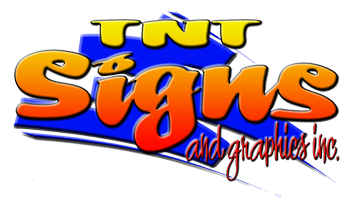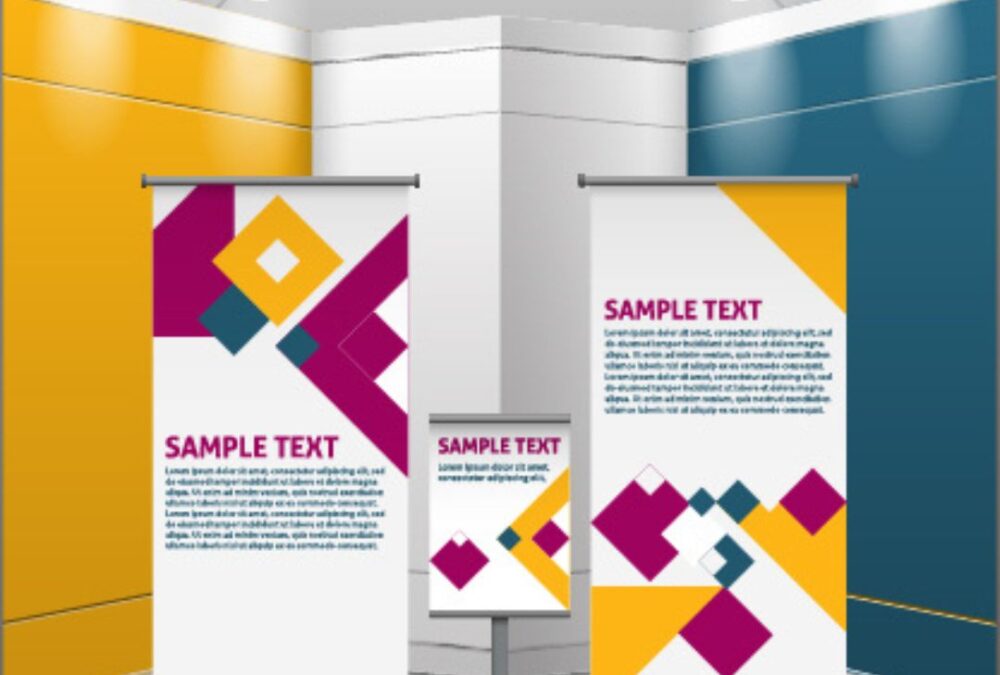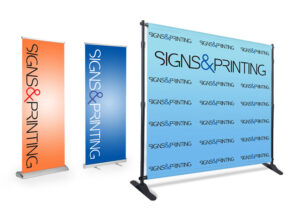Whether you’re using them in your store, as marketing, or at an event, most businesses use signs and banners. While these two items are similar, there are some key differences between banners and signs. Sometimes, you want to use a sign. Other times, a banner is more appropriate. In some cases, you could use either. Knowing when to use which of these materials will help you reach your customers and achieve your goal.
TNT Signs can help you determine whether you need a sign or a banner. Our team is here to help you create marketing materials that perfectly fit your needs and convey your message. If you’re not sure whether you need a sign or a banner, this blog may help. You can then reach out to our team to learn more or to begin your project.
Sign Basics
Signs are one of the most basic forms of marketing or directing customers. They can have multiple uses. Some signs are advertising products or specials, while others are purely informative. Signs can also greatly range in size. You can have a sign that’s smaller than a sheet of paper. You may have seen some restroom signs that are fairly small. You may also have signs around the office for your employees that aren’t very big.
Some of these signs are temporary paper signs that were quickly made to let people know important information. If your copy machine is out of order, you might print off a simple sign and tape it to the machine so people know not to use it. Other signs need to be permanent, so they need to be made out of more durable material.
Signs can be hung on the wall, suspended from the ceiling, taped to a window or glass door, and hung in many other places. Some signs are printed on material that can withstand the elements so they can be used outdoors, while others are made from less durable materials and are for indoor use only.
Large signs are usually made from strong materials, even if they’re designed to be used indoors, just so they can easily be hung. This is especially true for signs that you’re going to suspend from the ceiling. A paper sign could easily rip and fall, but one made from sturdy board, vinyl, or even wood won’t. Large signs can help direct customers through your store or office, more visibly promote products, or advertise your brand.
When Should You Use a Sign?
Signs can be both temporary and permanent, so they’re a good option for just about anything. They’re durable, can be designed for use indoors or outdoors, and can be hung in a number of different places using a number of different methods.
Because large signs are typically made using rigid materials, they aren’t always very portable. You may not easily be able to move a large eight-foot sign due to its size and its weight. This means signs aren’t as useful for events held away from your location or for trade shows. Large signs made out of certain materials may be too heavy to be used in certain areas and will need to be securely attached to the wall, ceiling, or other area so they don’t fall.
The Basics on Banners
Banners are typically fairly large, with standard sizes ranging from four feet to ten feet across and two or three feet high. Some are even larger—for example, there are banners that have hung down the entire side of a building or that measure over 1,000 feet long.
One of the things that sets banners apart from signs is the material used. While signs can be done on paper, poster board, cardboard, wood, and other durable materials, banners are typically printed on either vinyl or fabric. Banners that are designed for outdoor use are usually printed on vinyl, while those for indoor use may be on either material.
Being on lighter material gives banners a couple of different benefits over signs. They can be hung on just about anything since they’re lighter. Banners also often have grommets placed evenly across the top, bottom, and sides. You can use rings, zip ties, or other hangers to attach the banner to grid panels, hooks, or other things. Since you don’t always need to put a grommet through every hanger, this gives you some flexibility in how the banner is displayed.
On the downside, because they’re flexible, banners do need to be supported in the center. Otherwise, the top part of the banner may fold over, making it difficult to read everything on it. When used outdoors, banners can be blown about by the wind. Incredibly high winds may even rip out the grommets, destroying the banner.
The second benefit to using a lighter, foldable material such as fabric or vinyl is that banners can easily be transported. That’s why they’re often used outdoors at events or hung in tradeshow booths. Banners are also easily cleaned. Fabric banners can be washed in a standard washing machine, while vinyl banners can usually be wiped clean. Signs, on the other hand, may stain more easily since some materials can’t be cleaned.
While banners are often designed as long rectangles, they don’t have to be. You can design a banner that hangs vertically if that fits your needs better. You can also create mini banners that are only a few feet long. While banners are typically hung, there are special stands that you mount the banner on, turning it into a freestanding sign. Outdoor banners can be affixed to light poles, the exterior of buildings, and even stakes in the ground.
When Should You Use a Banner?
Banners are ideal when you need something portable, which means they’re great for trade shows and advertising in areas where you can’t put up a permanent sign. They can also be a good solution to limited events or sales that you do every year. This is because when not in use, the banner can be folded up for storage. You can have a dozen different banners stored on the same shelf in a cabinet, so you don’t have to devote a lot of space to them. Banners may also be more versatile than signs in some cases, though there are times when the opposite is true.
Some Examples of Signs and Banners
Deciding between a sign and a banner can be simple, but there are times when both would work. Which one should you go with? Here are a few examples that might help you decide.
You want to list out the product categories found in each aisle of your store: signs hung from the ceiling are typically the best option. Banners could sway back and forth, making them difficult to read.
You need to direct attendees to the parking lot of an event held at an event center: a banner is perfect since it will be outdoors and will only need to be displayed during the event. You can also use stakes to place the banner in a grassy area near the lot.
You want to announce your store’s grand opening: a banner affixed above the door is a great option. It will be outdoors, so vinyl is a good material to use. You’ll also want a fairly large display. A big banner is more cost-effective and easier to hang than a large sign.
Customers need to know where to go when they enter your office: a sign works well for this. It doesn’t need to be too large, and it will likely be a permanent sign, so it won’t need to be moved often.
Get the Most out of Your Materials with Custom Signs and Banners
Designing a basic sign or banner may provide the information you need your customers to see, but these options aren’t always going to grab people’s attention or promote your brand. That’s where custom banners and signs work much better. By creating custom options that include your branding, company name, photos, and other graphics, you can communicate information while also promoting your company. Colorful signs and banners designed correctly are going to get much more attention.
Customizing your signs and banners doesn’t have to be that difficult, either. Using your company’s color scheme and including your logo may be enough for some things. For example, the sign mentioned above that would direct customers once they enter your office doesn’t need to be overly complicated. It could simply include a list of offices and arrows pointing to which way to go or room numbers. Then simply put your logo at the top and it’s done. It’s still a custom sign branded with your information, but it’s not too much.
TNT Signs is Here to Help you with all Your Custom Sign and Banner Needs
Whether you already have your custom sign designed or need some help creating an amazing banner, TNT Signs is here to help. We offer a full design team to assist you in making your design a reality, and our print shop can print a wide variety of different items. Signs, banners, stickers, even car wraps—we can do it all! Reach out to TNT Signs today to learn more.





